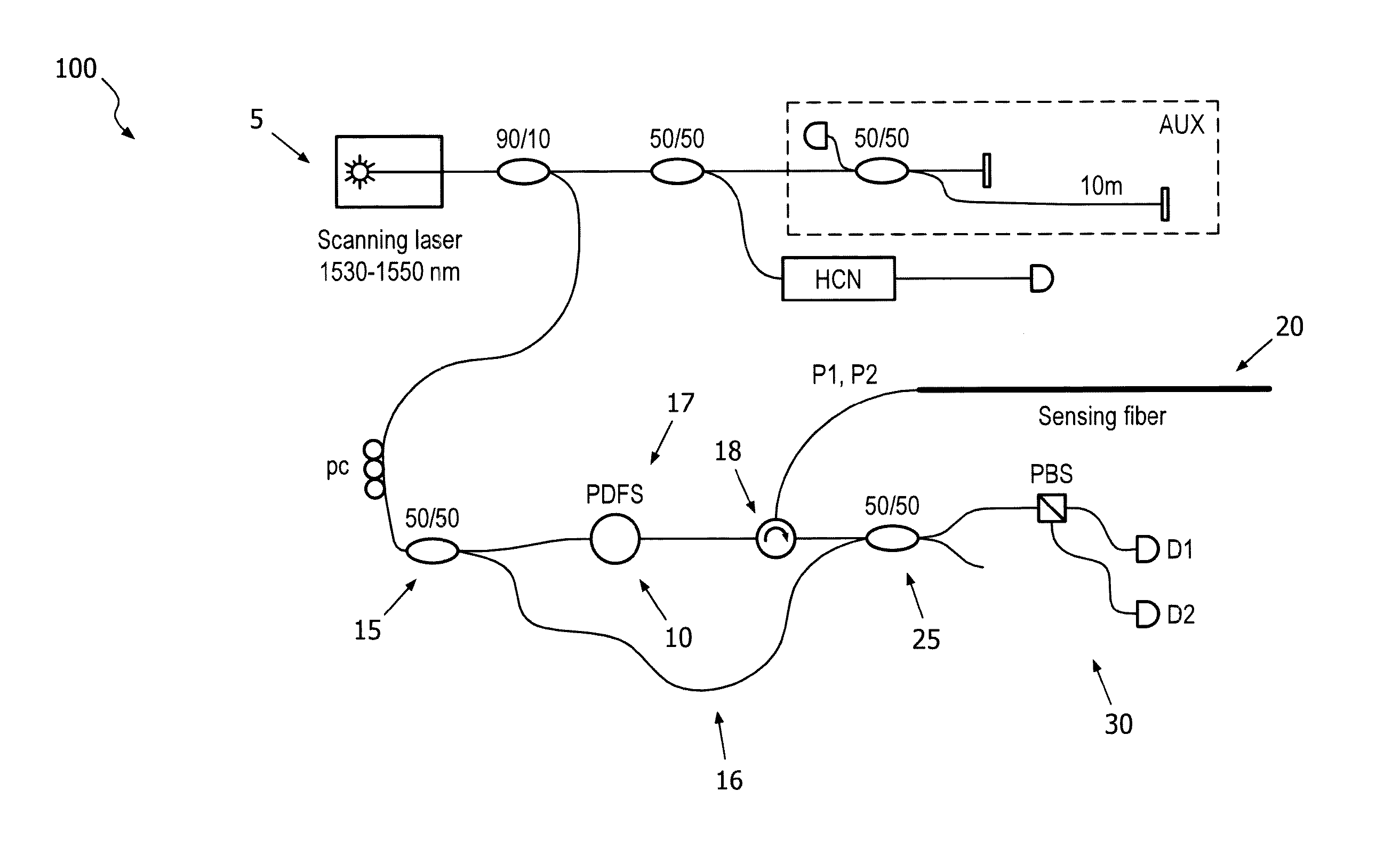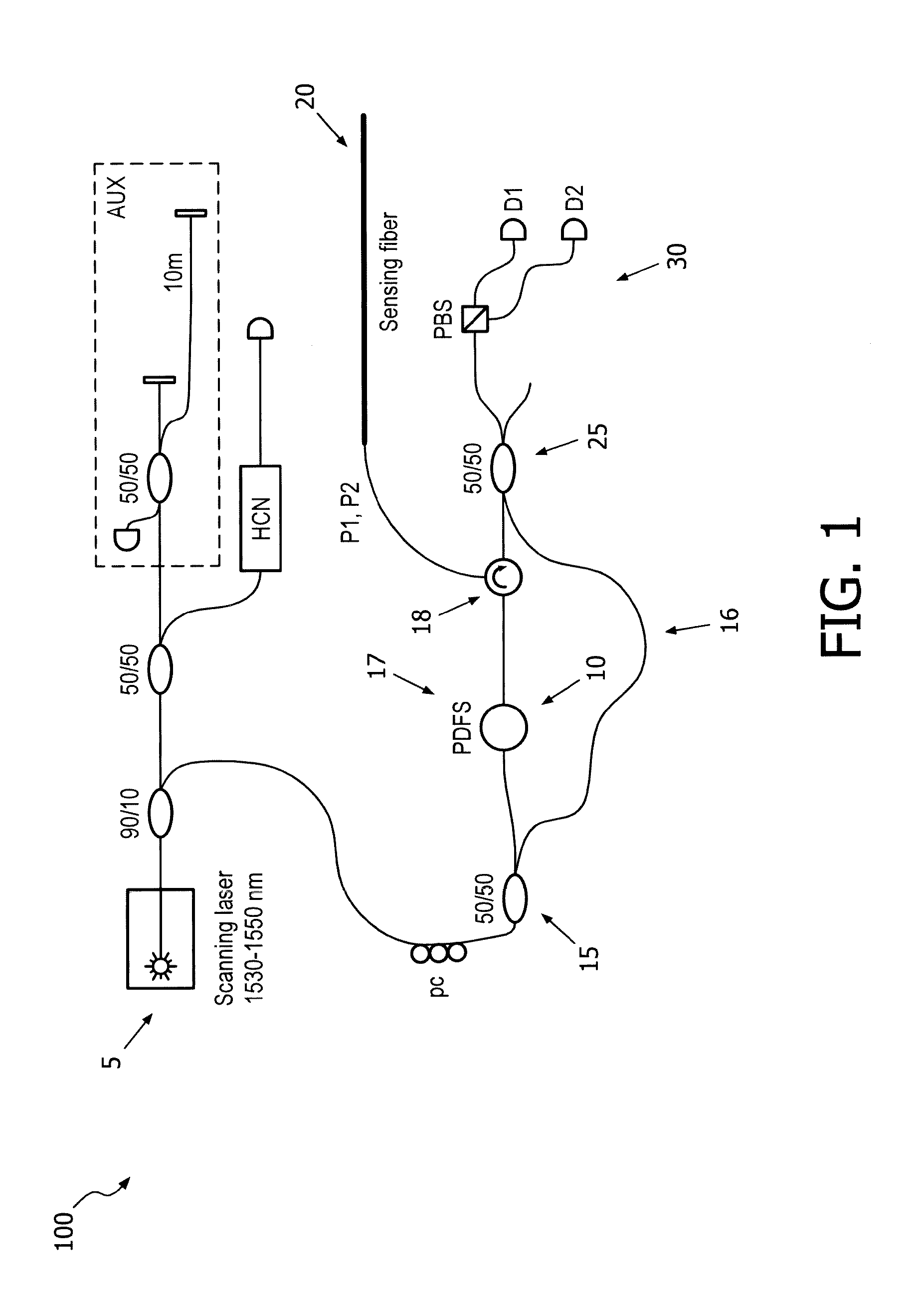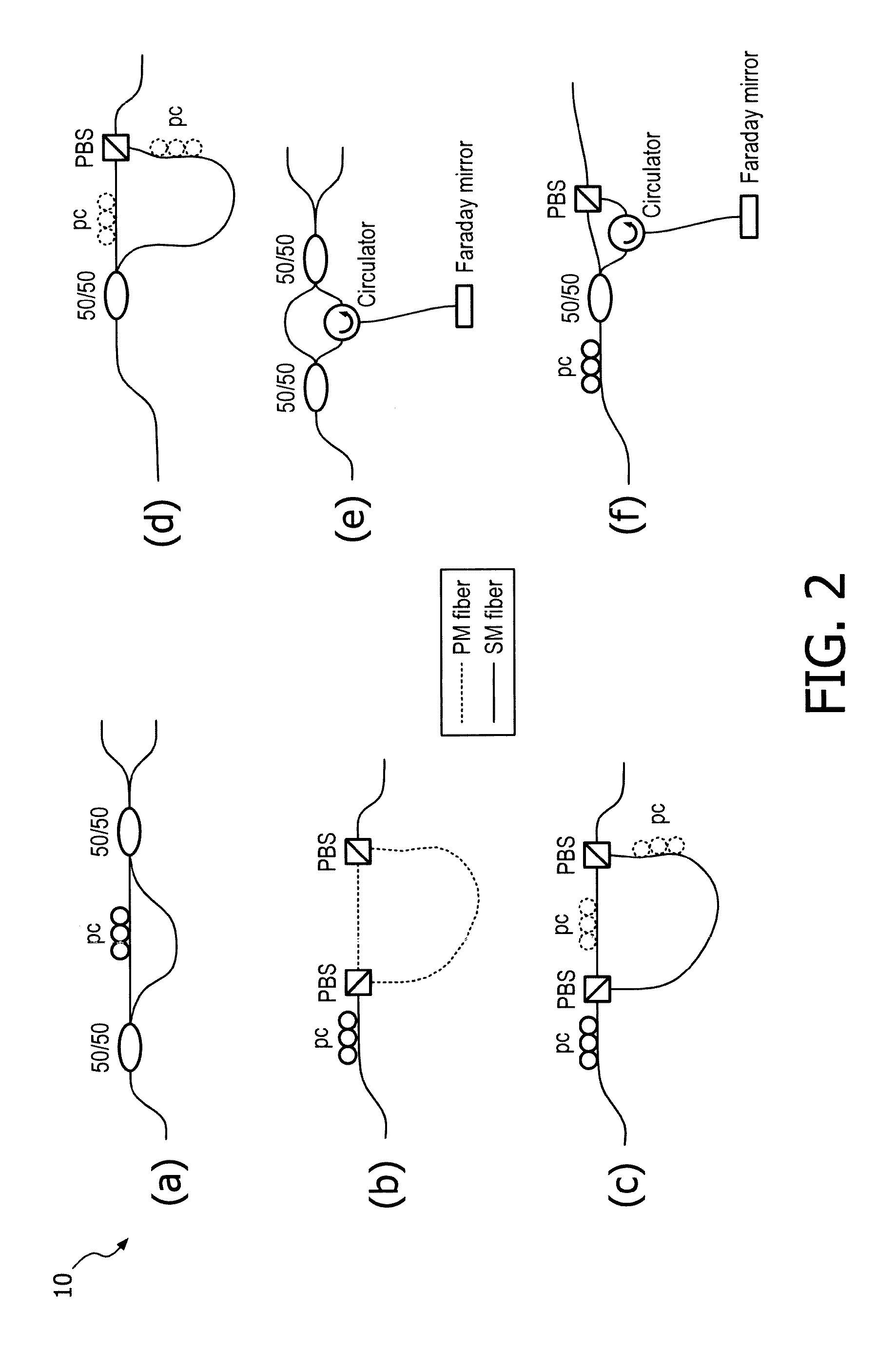Optical frequency domain reflectometry (OFDR) system
a technology of optical frequency domain and reflectometry, which is applied in the field of optical analysis, can solve the problems of reducing the effective rate at which the measurement process can be reliably repeated, affecting reliability, and weakening the strength of the interference signal coming from these certain parts of the sensing fiber
- Summary
- Abstract
- Description
- Claims
- Application Information
AI Technical Summary
Benefits of technology
Problems solved by technology
Method used
Image
Examples
embodiment (
[0085c) is similar to embodiment (b), but in embodiment (c) standard single-mode fibers are used for the two branches. As these fibers are not guaranteed to maintain polarization, the polarization states of the two branches upon arrival at the combining PBS may no longer be linear and aligned with the polarization axes of the combiner PBS. Although the combiner PBS cleans up the polarization states of the light coming from the two branches so that linear, orthogonal, states end up in the output fiber, power may be lost. To minimize power losses, the two branches can be equipped with polarization controllers (shown dotted in the Figure).
[0086]Embodiment (d) has a 50 / 50 splitter as its splitting element to divide the light over the two branches. Standard single-mode fibers are used for the two branches. Embodiment (d) uses a PBS as a combiner, thus ensuring that the polarization states of the two branches always result in two linearly polarized orthogonal states in the output. The opt...
PUM
 Login to View More
Login to View More Abstract
Description
Claims
Application Information
 Login to View More
Login to View More - R&D
- Intellectual Property
- Life Sciences
- Materials
- Tech Scout
- Unparalleled Data Quality
- Higher Quality Content
- 60% Fewer Hallucinations
Browse by: Latest US Patents, China's latest patents, Technical Efficacy Thesaurus, Application Domain, Technology Topic, Popular Technical Reports.
© 2025 PatSnap. All rights reserved.Legal|Privacy policy|Modern Slavery Act Transparency Statement|Sitemap|About US| Contact US: help@patsnap.com



